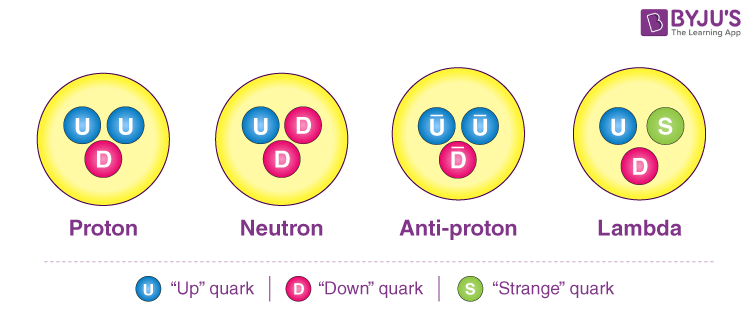Quarks stand as one of the fundamental constituents of matter, captivating the minds of physicists and enthusiasts alike. These elementary particles, foundational to the structure of protons and neutrons, are intrinsic to our understanding of the universe. The journey into the world of quarks reveals not only their essential role in forming hadrons but also tantalizing insights into the fabric of reality itself.
The fundamental framework of particle physics maintains that all matter is composed of elementary particles, including quarks. Quarks are categorized as fermions, which means they obey the Pauli exclusion principle. Unlike bosons, which can occupy the same quantum state, fermions are constrained to occupy distinct states, leading to a rich tapestry of interactions. This distinction underpins the intricate behavior of matter at the subatomic level.
At the heart of quark theory lies the concept of colors. No, this has nothing to do with the visual spectrum familiar to our senses, but rather a quantum property crucial to the strong force, which binds quarks together. Quarks possess a property known as “color charge,” existing in three variants: red, green, and blue. Just as artists combine colors to create vibrant hues, quarks must combine in such a way that their color charges neutralize, producing a color-neutral particle. This phenomenon is essential for the formation of protons and neutrons in atomic nuclei, illustrating the synergy between quarks that gives rise to familiar matter.
Quarks are never found in isolation. The confinement that keeps them bound within larger particles is a profound aspect of quantum chromodynamics (QCD), the theory that describes the strong interaction. Attempts to isolate an individual quark lead to an interesting observation: when energy is applied, quark-antiquark pairs emerge rather than releasing a solitary quark. This process is reminiscent of a vigorous furnace where, instead of extracting a single ember, additional logs of energy produce an expansive fire rather than a simple flame. This self-contained dance of quarks ensures that they always exist in groups, termed hadrons, with baryons (such as protons and neutrons) and mesons being notable examples.
The existence of six flavors of quarks—up, down, charm, strange, top, and bottom—adds richness to this subatomic tapestry. The up and down quarks are the building blocks of protons and neutrons, while the others contribute to heavier mesons and baryons. Each flavor of quark carries unique properties such as mass and electric charge, which dictate their behavior in the universe. The up quark, for instance, has a charge of +2/3, while the down quark carries a charge of -1/3. This intricate balance among quarks elucidates the electric charge of protons and neutrons, providing insight into atomic structure.
The mass of quarks is another area ripe for exploration, particularly given their peculiarity. Although it seems at odds with their minuscule masses, quarks account for only a fraction of the mass of ordinary matter. Much of the mass of baryons arises not from the quarks themselves but from the energy of the strong force that binds them together, in accordance with Einstein’s famous equation, E=mc². This relationship reveals a deeper truth: that mass and energy are interconvertible forms, a concept that leads to philosophical inquiries about the essence of existence.
Quark interactions and transformations give rise to fascinating phenomena such as flavor changes, governed by weak interactions. The charm and strange quarks, for example, can interchange through the weak force, enabling processes such as particle decay. This capability elucidates the diversity of particle species and governs the behavior of unstable particles, which are pivotal in understanding the early universe and the processes of nucleosynthesis. By examining these flavor transitions, researchers glean insights into fundamental symmetries in nature, culminating in the symmetry violation that is integral to the evolution of our cosmos.
Theoretical advancements regarding quarks have led to the development of models such as the Standard Model of particle physics, which encapsulates our current understanding of fundamental particles and their interactions. The aspirations to discover the elusive ‘quark-gluon plasma,’ a state of matter believed to have existed microseconds after the Big Bang, exemplify the compelling nature of quarks. Experiments conducted in particle accelerators, such as the Large Hadron Collider, push the boundaries of knowledge, tantalizing scientists with glimpses into primordial conditions that may unveil the origins of our universe.
With ever-advancing technology and methodologies, researchers continue to probe deeper into the realm of quarks, seeking answers to profound questions about matter, antimatter, and the fundamental forces that govern them. As we endeavor to unearth the mysteries that surrounding quarks and their interactions, we are reminded of the interconnectedness of matter and energy, the ongoing quest for understanding, and the enduring wonder that lies at the heart of fundamental physics.
In conclusion, quarks represent an essential building block of our material universe, encapsulating remarkable properties and interactions that contribute to the intricate dance of matter. They embody the fusion of theory and experimentation, offering both challenges and revelations. Our fascination with quarks is not solely born from their scientific significance, but also from the philosophical implications they embody—a quest for understanding the universe’s fundamental nature. As research progresses, our grasp of quarks and their mysteries may unlock secrets that reshape our comprehension of everything we hold dear.












